Steamy Java 2010 Parts 1 & 2
Part 1
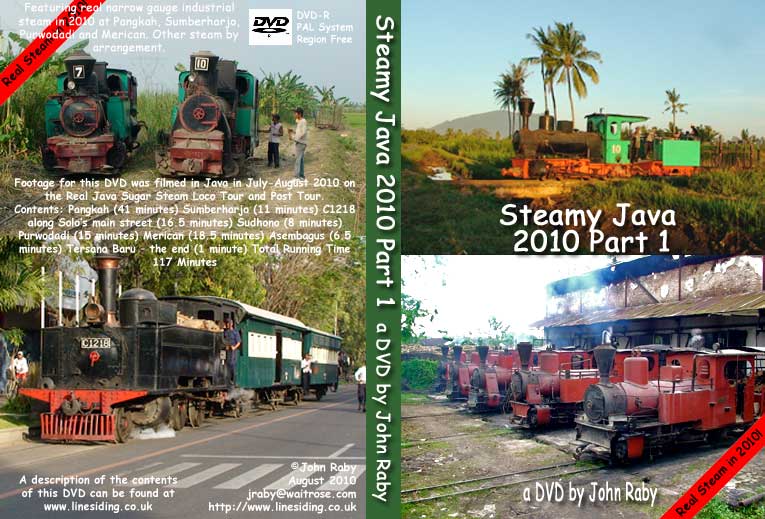
Available now for £18 postage paid worldwide
Part 2
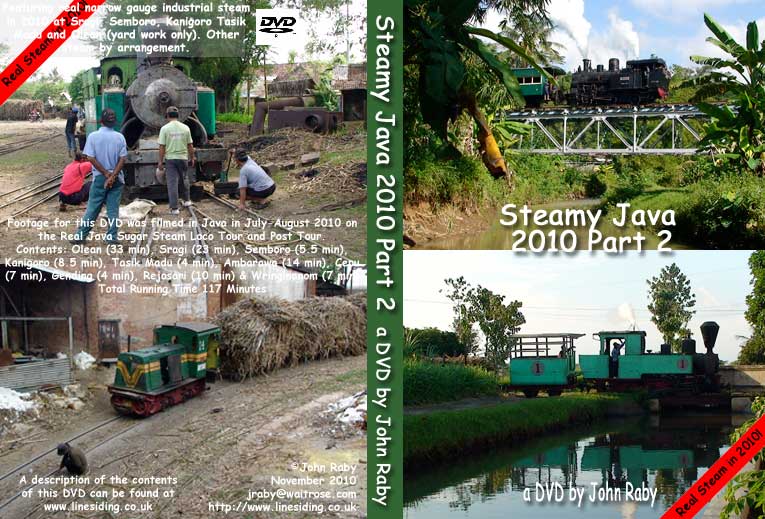
Available now for £18 postage paid worldwide
Buy Both DVDs for £30
These DVDs feature real working narrow gauge industrial steam in 2010.
Part 1 includes the last mallet in the world in real use as well as real steam at Pangkah, Sumberharjo, Purwodadi and Merican, steam substituting for diesel at Sudhono and Asembagus and a steam charter along the main street of Solo.
Part 2 features real steam at Sragi, Kanigoro and Tasik Madu as well as real steam with additional charters at Olean and Semboro for the fireless steam locos still in regular use. Also included are special trains on the 3ft 6in gauge on the Ambarawa rack railway and the Cepu forest railway. We also see diesel operations at Rejosari, Gending and Wringinanom.
The 2010 Java Steam Loco tour which went under the slightly long-winded title of ‘The Real Java Sugar Steam Loco Tour 2010’ was a very successful event as judged by both organisers and participants. The weather improved miraculously from the wet weather of June and early July as soon as we headed east from Jakarta to the first mill and we found most mills working normally although there was little or no dry bagasse for the locos to use and they were either burning expensive wood or the mills were using diesels locos as a cheaper option. Because we had a parallel stationary steam engine tour running and a total of 3 buses, we were able to provide a range of options on an almost daily basis and participants were able to follow their own special interest whether that was real working steam locos, 2ft gauge railways, mills with stored steam not usually visited or with rare diesels at work. They were also encouraged to go inside some of the mills to see the working stationary engines. You can read about the tours and the various options on the following web pages:
http://www.users.waitrose.com/~jraby/javablog10-1.html
http://www.internationalsteam.co.uk/tours/change2010.htm
http://trainrover.blogspot.com/
Part 1
The Steamy Java 2010 Part 1 DVD covers around half of the activity we saw.
There are 8 different sections to the DVD with a total running time of around 2 hours:
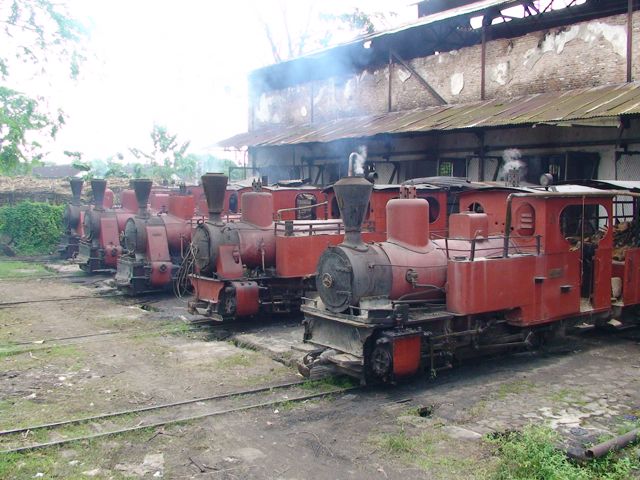
Pangkah (41 minutes)
Probably the most attractive mill with only yard work. Five locos were
lined up for work outside the shed at lunchtime although normally only
3 were in use on any one day. The footage is divided into shed and light
engine scenes, the truck yard, the mill straight, the reversal to the
mill and trains of empty loris returning to the truck yard.
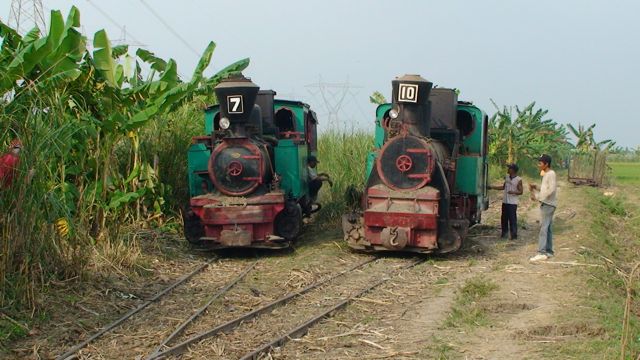
Sumberharjo (11 minutes)
The last mill with regular steam-hauled field trains although these normally
return to the mill after dark. The footage here concentrates on steam
locos in the fields (work around the mill was covered on the Steamy Java
2008 DVD).
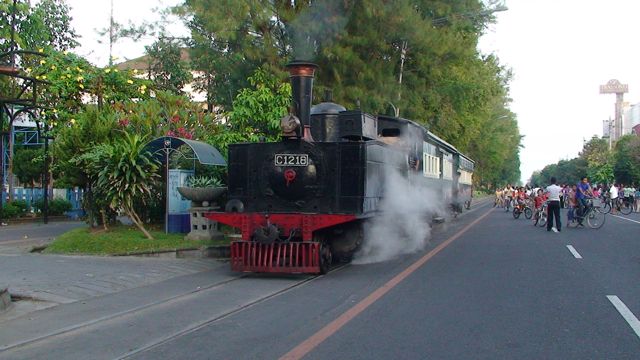
C1218 along the main
street of Solo (16.5 minutes)
When we visited in 2008, C1218 was still at Ambarawa where it failed before
working our train to Jambu. In 2010, we see it hauling 2 coaches down
the main street of Solo to Solo Kota station and then out into the countryside.
A wonderful 2010 addition to the steam attractions of Java. See Rob’s
report on this revival at: http://www.internationalsteam.co.uk/trains/java108.htm

Sudhono (8 minutes)
Sudhono along with Merican is one of the few positive stories since our
last visit in 2008. In 2009, they restored steam loco No. 3 to work trains
from the truck yard to the mill yard. They also have plans to restore
an additional loco Engerth-type No. 6 although it has a longer wheelbase
and is not ideal for yard work. However, No. 3 will only normally be used
(like the steam locos at nearby Pagottan and Rejosari) if dry bagasse
is available to make its operation more economical than a diesel. The
loco was not in use during the main tour but an offer from Lita in the
mill office to steam it for us during the post tour was willingly accepted.
Despite having only a small stockpile of wood for the loco, we achieved
two runs from the truck yard to the mill on the morning of 5 August. For
me, this was one of the highlights of the post-tour.
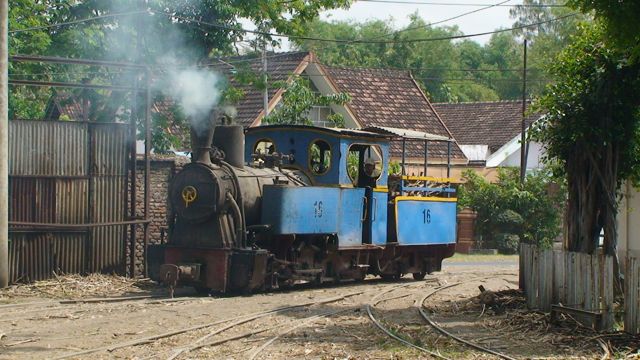
Purwodadi (15 minutes)
I have a soft spot for Purwodadi as it was the first mill I ever visited
when I hopped off a bus between Madiun and Solo with my wife in 1979.
Since 2008, the method of operating has changed again and whereas in 2008,
one loco would push from the truck yard and another would come onto the
back from a short spur just after the road crossing to bank the train
into the mill, in 2010 the trains were being pushed from the start by
two locos with the rear loco stopping just before the road crossing and
returning for the next train. The advantage of propelling is that cane
trains can be assembled without chains in place between the loris. The
disadvantage is frequent derailments as the loaded cane loris tend to
ride up when pushed. Another problem is that the crews are overtaxing
the locos so much that the two steam locos Nos. 7 and 10 in use on our
first visit were both out of use/under repair by the second visit when
No. 16 which had been under repair during the first visit was working.
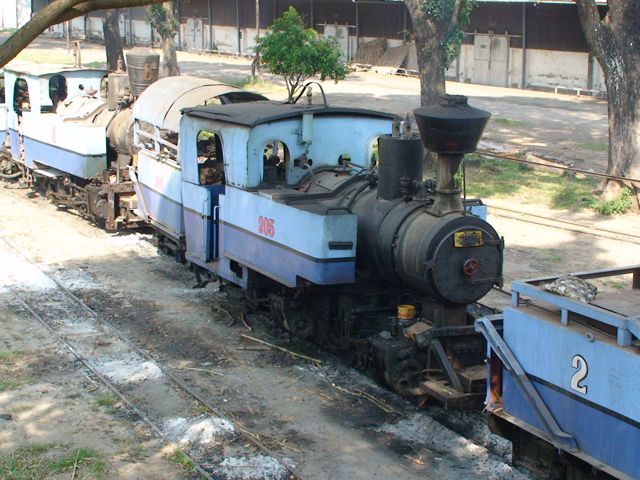
Merican (18.5 minutes)
Since 2008, Ducroo & Braun mallet 205 has been restored for action
alongside 2 other locos (including Borsig 0-8-0TT No. 2) hauling cane
from the truck yard to the mill. I believe that this is the last working
mallet in the world in industrial service (although I would be delighted
to hear otherwise). Since 2008, there has been a change of livery and
the locos are now an attractive two-tone blue with a black stripe.
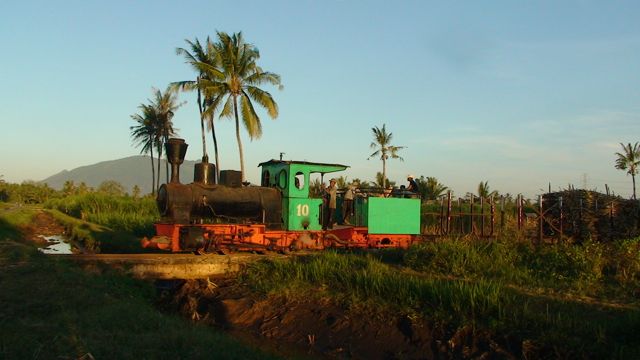
Asembagus (6.5 minutes)
The mill is even more marginal than Olean for steam in 2010 but they still
have 1 steam loco (with the other under repair) that can haul a charter
train or substitute for a diesel on a cane train. The line to the south
is probably the most scenic left in Java on which you can see a sugar
mill steam loco and we see 0-8-0 tender loco No 10 amid the coconut palms
with clear views of distant volcanoes preparing to bring cane back to
the mill. This was a great way to end the main part of our 2010 tour.
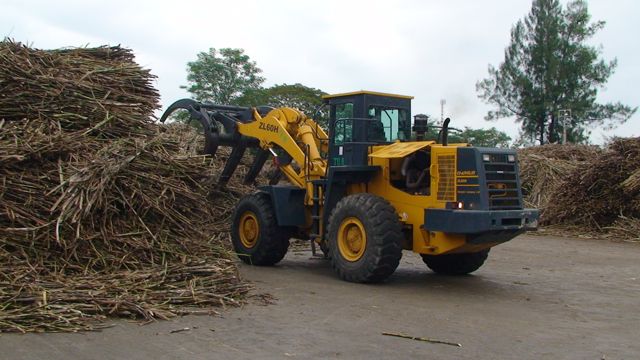
Tersana Baru –
the end (1 minute)
We shouldn’t ignore the future. At Tersana Baru, they have removed
the railway and replaced it with a new gantry to unload road trucks next
to the mill crushing line and two Chinese front-end loaders push the cane
over a new concrete patio into the mill train or stockpile it for later
use. If this ‘efficient’ method of working catches on (and
it should certainly be popular with truck owners and drivers as the trucks
we saw were unloaded swiftly without queuing for hours), the future of
not just the steam locos but the mill diesels and the rail systems in
the Javan sugar mills is bleak.
Part 2
The Steamy Java 2010 Part 2 DVD covers most of the rest of the activity we saw during the tour and post tour.
There are 10 different sections to the DVD with a total running time of around 2 hours:
Olean (33 min)
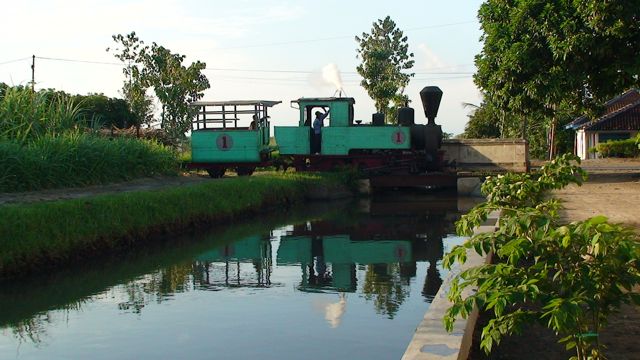
Olean was for a period in the late 1990s and early 2000s the best mill in Java to find several steam-hauled field trains returning to the mill in daylight. However, since 2009 use of steam here is limited to shunting around the yard and the two diesels service any of the much-reduced field work. Most of the cane now comes in by truck but a few fields are still worked by rail and it is possible to substitute steam for diesel on these trains. We see first 1 steam loco (plus 1 diesel) and then 2 steam locos (Nos 1 & 4) bringing in the cane. If you make an official visit to the mill and pay for firewood for the loco, this is still possible in 2010 but for how much longer?
Sragi (23 min)
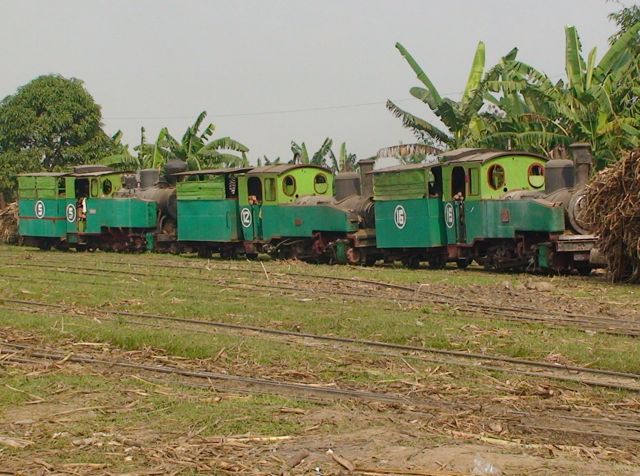
In contrast, Sragi is still very steamy with 5 large locos and a number of smaller locos working fulls and empties to/from the truck yard. All field work ceased several years ago but seeing an essentially all steam operation with occasional double- and triple-pushing makes for a very pleasant visit. There are a couple of diesels in use but you really have to hunt them out. They haven't been omitted from the final footage - they just didn't appear.
Semboro (5.5 min)
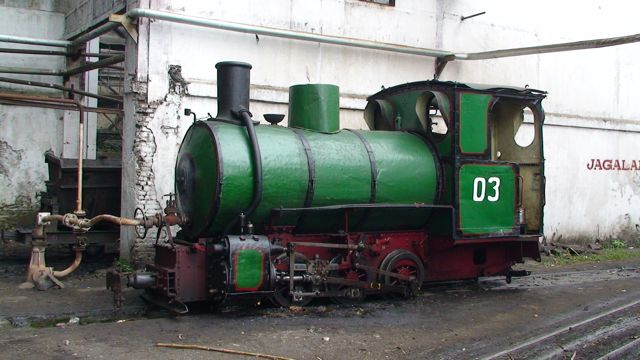
A previous group earlier in 2010 had some issues here and management seem to be quite anti railway enthusiasts despite the income this brings. We failed to get permission to visit in advance but on the day we were due to visit, there was a lunchtime call from headquarters asking if we still wanted to visit. This was hurriedly re-arranged for the next day and we went just to see the 2 fireless which definitely qualify as real steam. Management now say that the Jung and one mallet are available for charter but their health is not good.
Kanigoro (8.5 min)
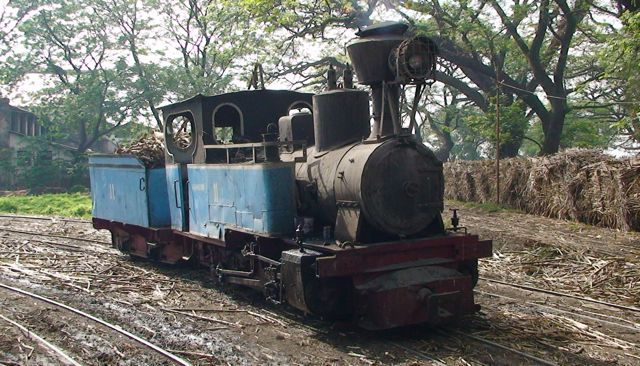
Although this is now a minor steam operation with one steam and one or two diesels in action, the steam loco in use has changed and is now No. 11. However, unlike Pagottan up the road, steam is still in daily use. They were having a bad day with frequent derailments but, given the state of the track and the point work, this could well be what a typical day is like.
Tasik Madu (4 min)
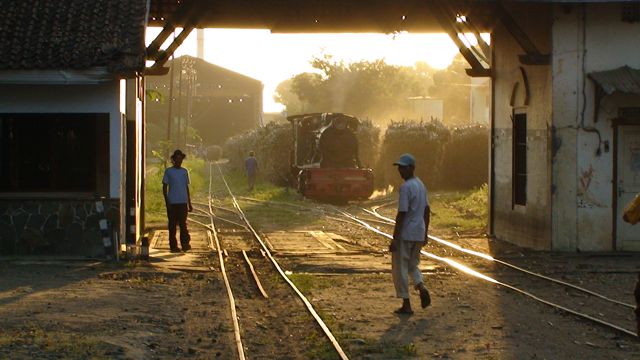
One of the major disappointments of 2010 is the marginal use of steam here. Steam tends to be used in the afternoon when the truck yards get busy but the far yard was not being used probably because there is a new loading point directly into the mill. Big 0-10-0 No. 6 was in action but no longer has the long haul around the mill to show what it is made of. It has also had its tender bogies replaced to allow it to work the tight curves of the tourist circuit here. Real steam won't last much longer but the tourist operation is very popular at the weekends and tourist steam probably has a reasonable future.
Ambarawa Rack Railway (14 min)
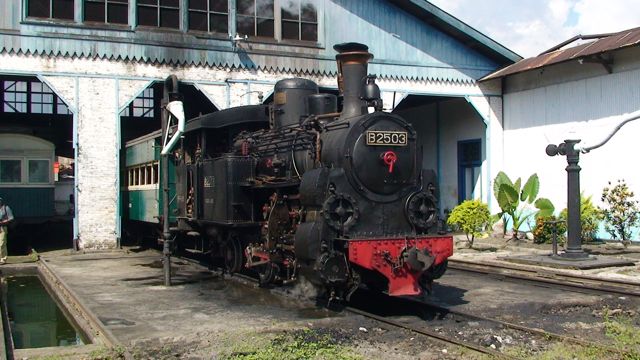
With the E10 back on Sumatra and the C12 in Solo, this operation is reduced to 2 working B25 rack tanks of which B2503 is the strongest loco. This was in better shape than in 2008 and actually managed to stop on the rack going down and climb back up the rack for run pasts. The footage is combined from 2 different ascents of the rack but as I have covered this line well in the past, the focus is on quality run pasts and I don't try to show the complete operation. Also included are shots of the sledges used unofficially on the centre rack rails to bring down vegetables and by boys as a high-adrenalin ride. There is a suggestion that the B51 compound 4-4-0 from the museum will be restored for 2011 to work the flat section round the lake from Ambarawa to Tuntang. B51s were probably my favourite PNKA loco in the last days of steam on the national railway and I would love to see it in action.
Cepu Forest Railway (7 min)
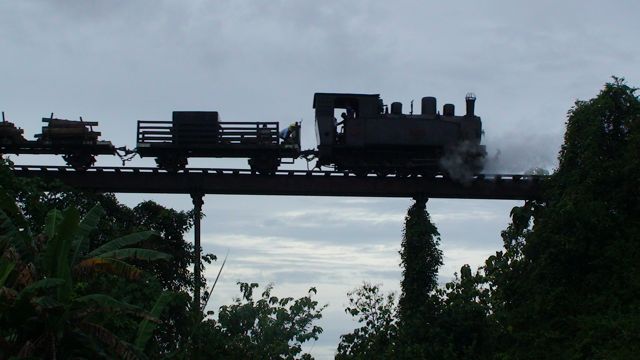
Similar comments to Ambarawa apply here. I've covered this more fully in the past. However, it was a very wet year and that meant that the vegetation was lush and overgrown rather than the normal dry and desiccated. In addition, strong winds and rain had felled a number of trees earlier in the year and the railway was used for real logging for a short period to clear up the valuable teak. The clear up was not complete (although the railway was not being used for that any more as trucks could now access the area) but we were able to bring in some real teak logs for a change unlike the coconut tree trunks that have sometimes been provided. It rained on the day and got dark before we got back to the depot so I bailed out at the road bridge over the Blora road.
Gending (4 min)
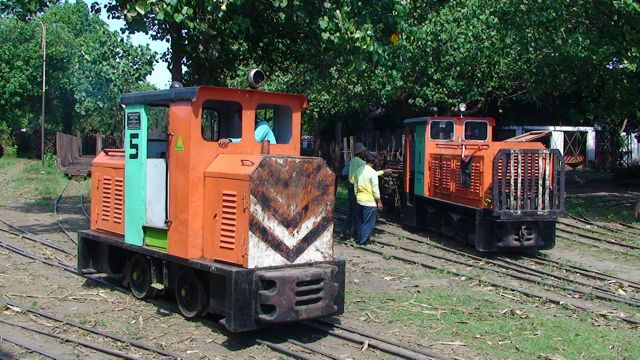
This mill has been all diesel for many years but still has field work and a variety of interesting 600mm diesels. We dropped in on the post tour to have a quick look at the morning action around the mill with 3 locos in use.
Rejosari (10 min)
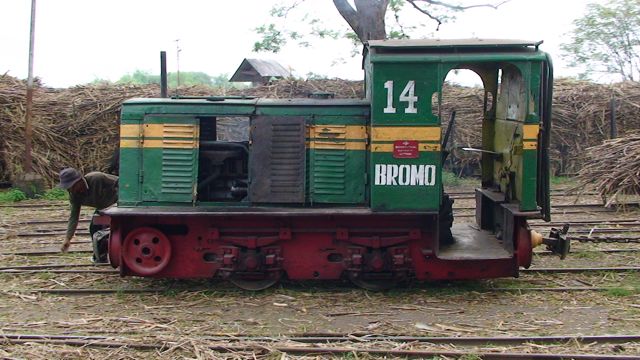
Although this mill is home to the jack-shaft drive steam loco Salak, all real work was being done by 3 diesels. In 2008 two steam loco (not including Salak) were also in use but lack of bagasse means that they are more expensive to run than the diesels. The footage shows the full diesel operation from empty loris being shunted to the loading gantry to full loris being unloaded at the mill.
Wringinanom (7 min)
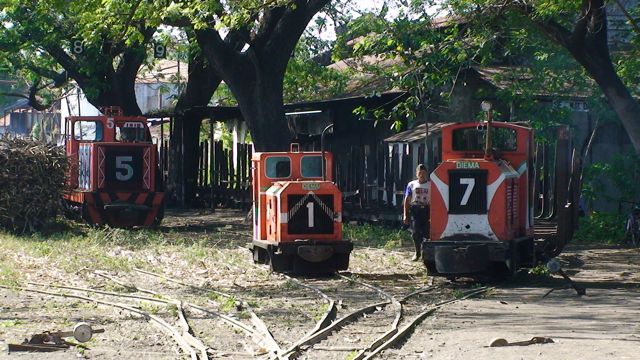
We coincided with the start of the day-time shift here around 8 am. The crews arrived and an interesting variety of diesel locos started their work for the day. The smaller locos took the empties out to the fields while the larger locos shunted cane to the mill and waited for their turn to go out to the fields in the afternoon to bring back the fulls.
For more Java steam in earlier years, please see my earlier DVDs Steamy Java 1999 and Steamy Java 2008, along with the Java Special Selection DVD. Steamy Java 2010 Parts 1 & 2 compliment these existing DVDs and, using material selected from the over 6 hours of video recorded this year, cover all of the mills with active steam and the vast majority of the remaining active steam locos in 2010.
Steamy Java 2010 Parts 1 & 2 are now available for £30. To order click here.
If you would like a copy of any of my other Java DVDs, they are also available at special prices in conjunction with an order for Steamy Java 2010. The double DVDs Steamy Java 2008 and PNKA Power Parade’s Final Fling are both GBP18 each and Steamy Java 1999 and Java Special Selection are GBP12 each. To order them for this price, you will need to email me quoting this offer so I can send you a PayPal payment request. Orders for these DVD directly from this website will be at the normal prices.
![]()
The Industrial Railway Society (IRS) will publish a full report on the trip in a future edition of their Overseas Bulletin later in 2010. Details of this publication will appear here when available. Full details of IRS publications and other benefits of membership can be found at www.irsociety.co.uk Rob Dickinson provides details of the industrial locos in Java at http://www.internationalsteam.co.uk/trains/javalist.htm
John Raby, 28 August 2010